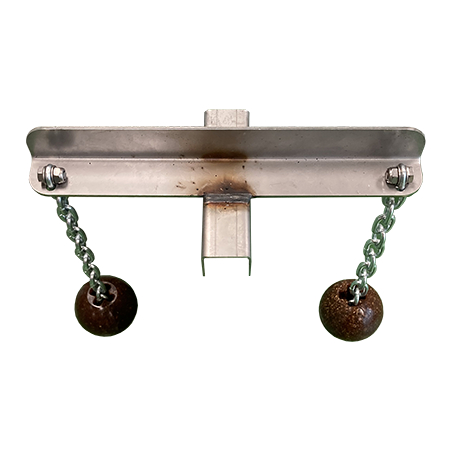Tail biting lesions are a potential measure of on-farm animal welfare, as a large range of stressors increase the risk for tail biting outbreaks. Further, tail biting is a major challenge, as lesions due to tail biting decrease animal welfare and health, as well as production efficiency and carcass quality. The aim of this study was to suggest a tail scoring system for use at slaughterhouses processing undocked pigs, and to link tail lesion scores to meat inspection data. A further aim was to suggest a definition for an intact enough tail. To validate the suggested scoring system we assessed tails before and after scalding and compared results to pathological examinations. In total, 14,433 tails were scored, and 117 tails were collected for pathological examination. After scalding, 49.2% of all tails were scored as fully intact. Of tails with lesions 2.5% were scored as having major acute wounds (>2 cm), while 11.6% had minor acute wounds (<2 cm), and 36.7% healed lesions. Intact tails were on average 31.5 cm long. Lesion scored at the slaughter-line agreed well with the pathological assessment.
Tail lesions were associated with several meat inspection findings: tails with more severe lesions and of shorter length increased the risk for meat inspection findings to a higher degree. A detailed lesion scoring method helps to identify carcasses at risk for condemnations, as well as being a potential method for on-farm welfare estimation. We suggest that a system for scoring tail lesions in undocked pigs should utilize a combination of scoring of the lesion and measuring the tail length. As bite marks or bruises on an otherwise intact tail were not a concern for meat hygiene, we suggest the definition of an intact enough tail could allow the inclusion of tails with these mild changes.

Meat inspection findings in carcasses with tails scored as healed, but with no fresh lesions, and with more than 75% of the average intact length remaining were rather similar to those of fully intact tails. Based on these findings we suggest that a tail of this length, and with no visible fresh lesions could also be considered intact enough.
Valros A, Välimäki E, Nordgren H, Vugts J, Fàbrega E, Heinonen M. Intact Tails as a Welfare Indicator in Finishing Pigs? Scoring of Tail Lesions and Defining Intact Tails in Undocked Pigs at the Abattoir. Frontiers in Veterinary Science. 2020; 7: 405. https://doi.org/10.3389/fvets.2020.00405






